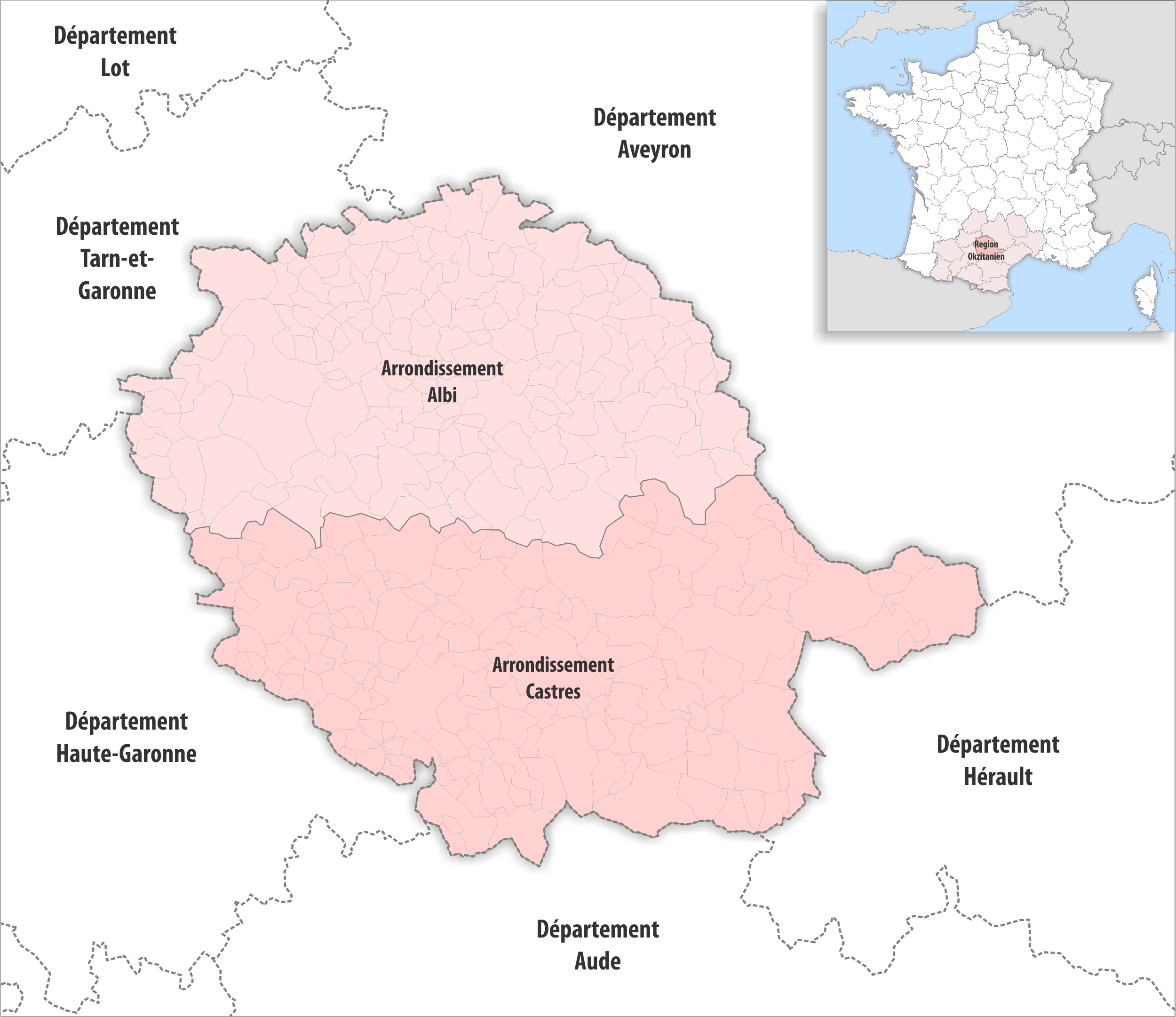|
Tarn (département)
Tarn ( or ; ) is a Departments of France, department in the Occitania (administrative region), Occitania Regions of France, region in Southern France. Named after the river Tarn (river), Tarn, it had a population of 389,844 as of 2019.Populations légales 2019: 81 Tarn INSEE Its Prefectures in France, prefecture and List of communes in France with over 20,000 inhabitants, largest city is Albi; it has a single Subprefectures in France, subprefecture, Castres. In French language, French, the inhabitants of Tarn are known as ''Tarnais'' (masculine) and ''Tarnaises'' (feminine). Its Institut national de la statistique et des études économiques, INSEE and postcode number is 81. History Tarn is one of the original 83 departments created during the French Revolution on 4 ...[...More Info...] [...Related Items...] OR: [Wikipedia] [Google] [Baidu] |
Departments Of France
In the administrative divisions of France, the department (french: département, ) is one of the three levels of government under the national level ("territorial collectivities"), between the administrative regions and the communes. Ninety-six departments are in metropolitan France, and five are overseas departments, which are also classified as overseas regions. Departments are further subdivided into 332 arrondissements, and these are divided into cantons. The last two levels of government have no autonomy; they are the basis of local organisation of police, fire departments and, sometimes, administration of elections. Each department is administered by an elected body called a departmental council ( ing. lur.. From 1800 to April 2015, these were called general councils ( ing. lur.. Each council has a president. Their main areas of responsibility include the management of a number of social and welfare allowances, of junior high school () buildings and technical staff, ... [...More Info...] [...Related Items...] OR: [Wikipedia] [Google] [Baidu] |
Arrondissements Of The Tarn Department
The 2 arrondissements of the Tarn department are: # Arrondissement of Albi, (prefecture of the Tarn department: Albi) with 163 communes. The population of the arrondissement was 191,150 in 2016. # Arrondissement of Castres, (subprefecture: Castres Castres (; ''Castras'' in the Languedocian dialect, Languedocian dialect of Occitan language, Occitan) is the sole Subprefectures in France, subprefecture of the Tarn (department), Tarn Departments of France, department in the Occitania (administ ...) with 151 communes. The population of the arrondissement was 195,298 in 2016. History In 1800 the arrondissements of Albi, Castres, Gaillac and Lavaur were established. The arrondissements of Gaillac and Lavaur were disbanded in 1926. References {{Arrondissements of France Tarn ... [...More Info...] [...Related Items...] OR: [Wikipedia] [Google] [Baidu] |
Languedoc
The Province of Languedoc (; , ; oc, Lengadòc ) is a former province of France. Most of its territory is now contained in the modern-day region of Occitanie in Southern France. Its capital city was Toulouse. It had an area of approximately 42,700 square kilometers (16,490 square miles). History The Roman province of Gallia Narbonensis fell to the Visigothic Kingdom from the 5th to the 8th centuries. Occupied briefly by the Emirate of Córdoba between 719 and 759, it was conquered and incorporated into the Kingdom of the Franks by Pippin the Short in 759 following the Siege of Narbonne. Under the Carolingians, the counts of Toulouse were appointed by the royal court. Later, this office became hereditary. Part of the territory where Occitan was spoken came to be called ''langue d'oc'', ''Lengadòc'' or Languedoc. In the 13th century, the spiritual beliefs of the area were challenged by the See of Rome and the region became attached to the Kingdom of France following the ... [...More Info...] [...Related Items...] OR: [Wikipedia] [Google] [Baidu] |
Provinces Of France
The Kingdom of France was organised into provinces until the National Constituent Assembly adopted a more uniform division into departments (''départements'') and districts in late 1789. The provinces continued to exist administratively until 21 September 1791. The provinces of France were roughly equivalent to the historic counties of England. They came into their final form over the course of many hundreds of years, as many dozens of semi-independent fiefs and former independent countries came to be incorporated into the French royal domain. Because of the manner in which the provinces evolved, each had its own sets of feudal traditions, laws, taxation systems and courts; the system represented an impediment to effective administration of the entire country from Paris. During the early years of the French Revolution, in an attempt to centralise the administration of the whole country and to remove the influence of the French nobility over the country, the entirety of the prov ... [...More Info...] [...Related Items...] OR: [Wikipedia] [Google] [Baidu] |
French Revolution
The French Revolution ( ) was a period of radical political and societal change in France that began with the Estates General of 1789 and ended with the formation of the French Consulate in November 1799. Many of its ideas are considered fundamental principles of liberal democracy, while phrases like ''liberté, égalité, fraternité'' reappeared in other revolts, such as the 1917 Russian Revolution, and inspired campaigns for the abolition of slavery and universal suffrage. The values and institutions it created dominate French politics to this day. Its causes are generally agreed to be a combination of social, political and economic factors, which the ''Ancien Régime'' proved unable to manage. In May 1789, widespread social distress led to the convocation of the Estates General, which was converted into a National Assembly in June. Continuing unrest culminated in the Storming of the Bastille on 14 July, which led to a series of radical measures by the Assembly, i ... [...More Info...] [...Related Items...] OR: [Wikipedia] [Google] [Baidu] |



